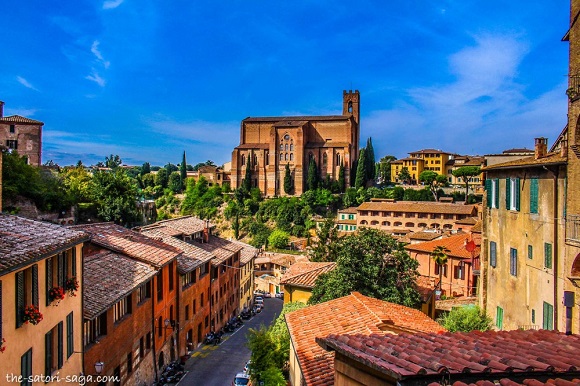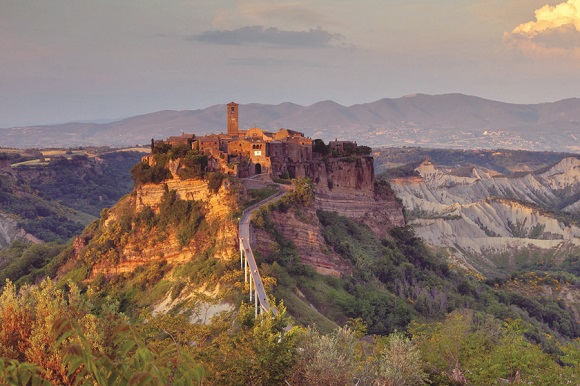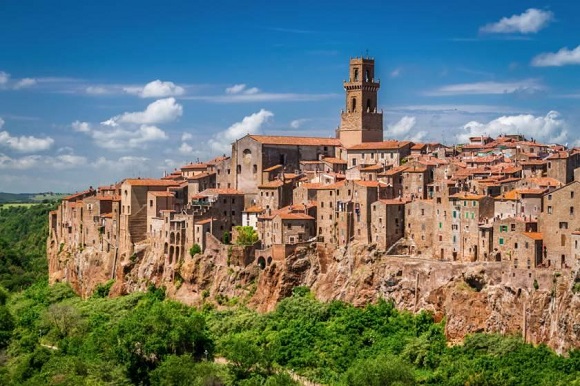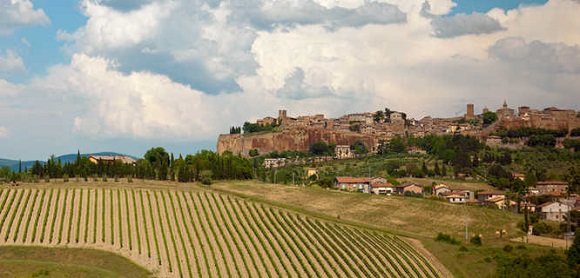You have chosen a famously historic area of Itlay for your horse riding holiday.
Tuscany, with its spectacular cities, towns, and scenery, is one of Italy's top vacation destinations. Tuscany's many attractions include historic cities and art-filled museums and churches, great wine and food, medieval hill towns, beaches, and beautiful countryside.
Each part of the Tuscany region has its own unique personality. Our riding holiday centre is located in the Southern Tuscany, one hour and half from Rome, half way between Orvieto and Siena, closely bordering with the regions of Umbria and Tuscany.
Siena
This city is well known for its gorgeous architecture and beautiful main square – the Piazza del Campo. Siena has a historic city centre that has been declared a UNESCO World Heritage Site. Additionally, Siena is also known for its legendary Palio horse race that takes place twice a year and draws hundreds of spectators. For those visiting Siena there is an abundance of beautiful architecture such as the Palazzo Pubblico and the Torre del Mangia. Furthermore, the city has a range of fantastic museums and galleries such as the Siena Civic Museum and the National Gallery. The historic centre of Siena is one of the best preserved in the region and is a true joy to explore.

Civita di Bagnoregio
The town teeters atop a pinnacle rising high above a vast canyon ruled by wind and erosion. The saddle of earth that once connected Civita to its bigger and busier sister town, Bagnoregio, has worn away. Photographs around town show the old donkey path that once linked the hamlets. Today, the only way in or out is by a footbridge. Supplies are ferried in on mopeds. The main entrance is a huge stone passageway, cut by the Etruscans 2,500 years ago and decorated in the 12th century with a Romanesque arch. Passing through the portal, you enter another world — one stuck in the Middle Ages. You can feel history in the smooth cobblestones under your feet.

Pitigliano
Pitigliano, Sovana and Sorano are known as the “cities of tuff” due to the geologic conformation of their land (the so called “area of the tuff”).
Pitigliano is perched on a tufa bluff, making it a dramatic sight. The village is also called "Little Jerusalem", not just because it looks ancient and bears a resemblance (in miniature) but more specifically for the long presence of a Jewish community in the town. There has been a "Hebrew quarter" for more than half a millennia, and there is still a synagogue, kosher shops and traditions intact. The Jewish district (quartiere ebraico) is the most characteristic and charming section of town. This fascinating town rests on top of a cliff and exudes a romantic and mysterious air. It unfolds along the ridge with narrow, almost-secret alleys and opens into little overlooks. Beneath are age-old wine cellars carved right into the rock on which Pitigliano is built, with a network of secret tunnels and intersecting chambers. The stuff of fantasy and epic films! In fact, nearly every house is provided with a cellar, which goes down, down, down into the cliff, with wooden barrels where the wine is preserved at a constantly cool temperature. The Bianco di Pitigliano is a crisp white that is gaining in popularity.

Orvieto
In the region of Umbria the stunning medieval city of Orvieto rises above the surrounding countryside sitting on its perch of volcanic tufa. Far below lies vineyards and fields dotted with ancient villas and vineyards. Orvieto has been inhabited since Etruscan times a fact that is still evident today in the underground world of caves and tunnels that run under the city.

Weather
What is the best time of year to go to Orvieto in Italy? Here are some average weather facts we collected from our historical climate data:
During the months of May, June, July, August and September you are most likely to experience good weather with pleasant average temperatures. On average, the warmest month(s) are July and August. On average, the warmest month is July. On average, the coolest month is January. November is the wettest month. July is the driest month. The average annual maximum temperature is: 18.0° Celsius (64.4° Fahrenheit), the average annual minimum temperature is: 7.0° Celsius (44.6° Fahrenheit).
How to get there
Arrive in to either of Rome’s airports and you will be transferred to the picturesque castle location for your riding holiday.
Airport transfers - Transfers from both Rome airports (Fiumicino & Ciampina) are available on request between 10am-7pm. You will be met by your driver in arrivals, they will have a sign with your name on. 1 person = €200. 2-3 people = €230. 4 people = €250. All transfers are payable directly to the castle on arrival.
Train station transfers - Transfers from Orvieto train station are available on request. There are good train connections from Rome to Orvieto which take approximately 1.5 hours. 1 person = €90. 2-3 people = €120. 4 people = €140.
